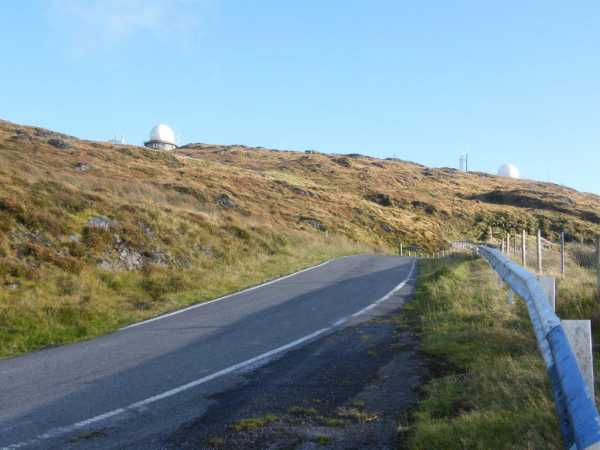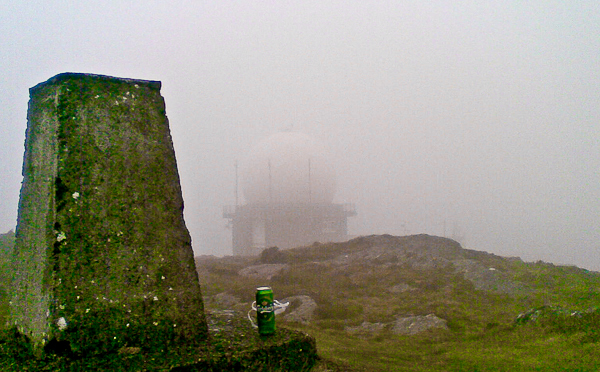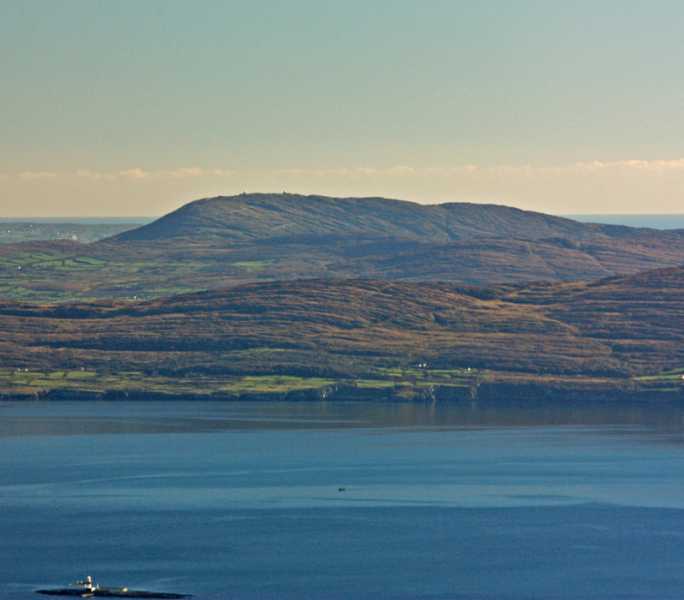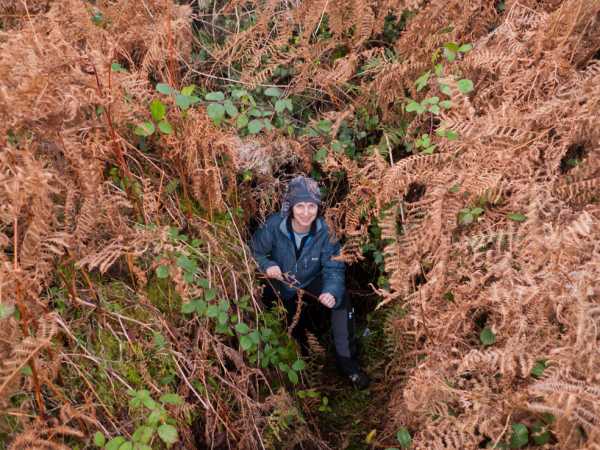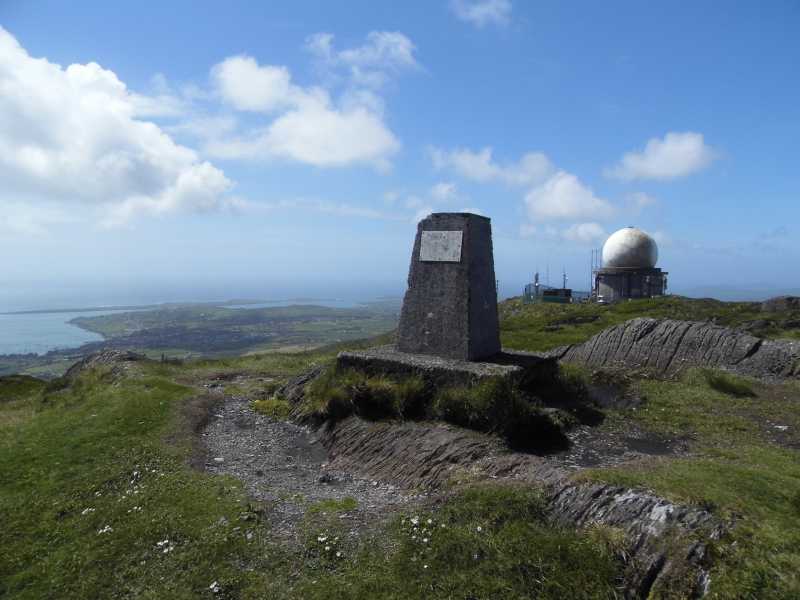Wet wet wet, wet to the skin, wet to the bone, 100% water I was. But there was only one left. Will I? won't I?, sure I'll go and have a look at the Aviation authority roadway, the one marked on the map on the north side of the hill.Ah Jaysus! the gates open! how fast can I drive up and down,
4 minutes to climb 220 meters.
And best of all, someone left me a Beer.
The preacher Caeser Otway travelling in this area in 1822 wrote
"On my way to Bantry I passed the dark and lofty Mount Gabriel and took my way over a dreary, comfortless tract of country.
Let no one say after looking at these moors , studded over with cabins crowded with children, pigs, goats, cocks and hens that a poor Irishman is not an industrious creature.
Men,women, boys and girls toiling up the mountainside with seaweed and sea sand,in baskets on their backs.
See them reclaiming from amidst rocks and bogs, patches of ground on which to cultivate their only food, the potato; And no one witnessing this struggle of human industry against nature, but must acknowlege that the Irish can be industious."
Linkback: mountainviews.ie/summit/792/comment/5844/
Read Less


